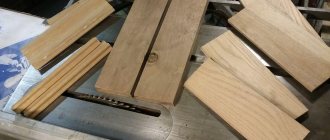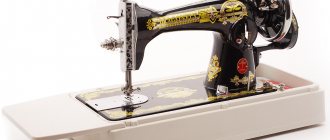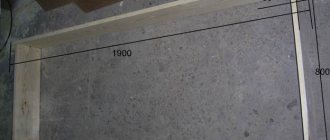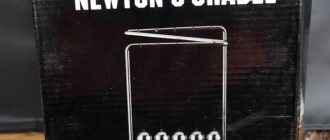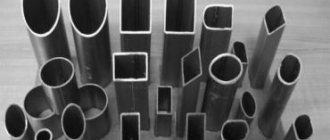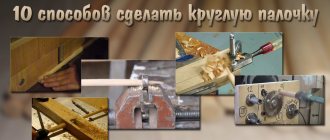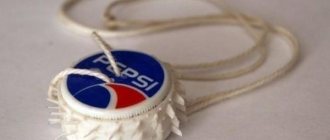Why there is a hiding place in the house is a matter for the owner. Prying into other people's secrets is the height of indecency, just like counting other people's money, peeking into someone else's plate and bed. But how to arrange a hiding place is another matter. This is a technical task and, perhaps even more so, a psychological one.
There are such very informative books: Gromov V. A., Vasiliev G. A. “Encyclopedia of Safety” and Sundakov V. V. Encyclopedia “Safety” for children; There are free online versions of them. It describes many ways to arrange caches, incl. very witty. But these manuals, and various others, have been carefully studied by thieves and law enforcement officers. Along with many others, inaccessible to the general public, informal and legal, for official use. Therefore, making a cache means studying all the available material on this topic and figuring out how to arrange something similar, but different, for yourself . To do this, you need to be able to think specifically and, to some extent, get used to the role of a villain or special agent. The purpose of this publication is precisely to give the reader the beginnings of “secret” thinking, but not at the expense of technology. It is also very important, especially when you need to disguise a hiding place or come up with a locking mechanism for it.
Sockets
No thief would risk his life for money. Therefore, it would never even occur to him to poke his nose into electrical sockets. Turn off the electricity in the house and remove the plastic cover. A big enough hole will appear in front of you into which you can put your savings. There is one more life hack. If you plan to change the wiring in your apartment, make one false outlet. It may look like everyone else, but there will be no wires connected to it. This stash can be used all the time, and not just when you leave home and the power might go out. The thief will have no time to check all the sockets for the presence of current in them, and your wealth will be safe.
Electrical Tricks
One great idea is to equip a small hiding place in an outlet. To do this, you must first turn off the power, dismantle the internals and de-energize the wires. Another option is to make a false socket at the repair stage, the main thing is not to forget which is real and which is just an imitation. It's a good idea to cover the fake one with childproof covers.
Today, manufacturers produce safes with a front panel in the form of a rosette. This is a good solution for a hiding place, but it is better to install them during renovation.
Toilet
Surely you immediately thought of placing a bag of money and jewelry in the drain tank. This hiding place is already known to thieves, so there is no point in taking risks. You need to use a float that regulates the water level. Turn off the water, carefully remove it from the tank and cut it to make a storage container (for example, a pretty decent rolled up wad of money will fit in there). After this, glue the cut improvised lid with superglue or weld it using a lighter or soldering iron (the heated parts of the plastic will easily melt and stick).
Pipes
There is nothing easier than hiding valuables in the most unexpected place. Thieves will never think of looking for your savings where nothing disturbs the natural environment. Therefore, pay attention to the pipes that are located in the toilet or bathroom (preferably in the toilet, since there are more of them there). Buy exactly the same piece of pipe in the store or take the one that was left over from the repair. Place your savings there and attach them to real pipes. Rest assured that robbers simply won’t have time to check all the pipes for the presence of water. Just don’t forget where your cache is, since finding it will be problematic even for experienced detectives.
Bookshelf
At all times, it is an integral part of the interior of both huge castles and villas, and an ordinary modern apartment.
In this case, the cabinet itself is used, creating a pleasant “picture” for the interior of the room in which it is located. The functional use of the space behind it can be organized to suit every taste, for example, to hide the entrance to a huge library.
Or disguise a small cozy room for reading and just solitude.
You can hide the stairs leading to the attic or basement.
What room will you hide behind such a door: an office, a bedroom or a secluded IT center? The main thing is that the bookcase will not disturb the familiar and harmonious interior of your home, and no one will guess that it is a door.
If there is very little space, then you can still hide your minibar from prying eyes.
Cushioned furniture
People often hide money in furniture, and specifically under the upholstery. And almost all thieves know about these hiding places. So you should do things differently. If foam is used as filling, carefully remove the upholstery and make a cut in the foam. Stick your hand in there and cut out a hiding place deep directly into the foam itself. Place valuables there, the upper part of the foam will close, and the holes, and especially the recesses, will not be visible. After this, attach the upholstery using a stapler. Surely it would not occur to thieves to “gut” all the furniture, including not only the upholstery, but also all the filling.
Pallets as shelves
One pallet and a dozen small boards will help create a convenient and multifunctional rack. On it you can store both large tools and the necessary small things, which should always be at hand.
Or you can turn the tray around, make more reliable shelves and store a drill, screwdriver and all the accessories on them.
Cornice
If your home does not have round curtain rods (very often these are used in certain interior design styles), pay attention to the curtain rod that holds the curtain in the bathroom. Such a “pipe” will definitely be hollow inside, so there is nothing easier than removing the side holder and placing a rolled up stack of bills in the ledge. Since it is possible to fold valuables on both sides, be sure to take advantage of it (for example, you can fold not only money, but also jewelry placed in a small bag or pouch).
Perforated board
To organize tools and put things in order in the garage, a board with small perforations on which you can attach various hooks is suitable.
In addition, construction stores offer a wide selection of accessories for perforated sheets:
- There are various clamps and hooks for hand tools;
- multi-place cylindrical holders;
- hooks with grooves for attaching pliers.
Fridge
The refrigerator door closes tightly because there are magnets around the perimeter. There is a rubber braid on top. Carefully pull back the braid and make a small cut, removing some of the magnets that are divided into segments. Place your savings into a cavity made of thin material (you can even break it with your hands) and cover the hole with braid. Even if thieves are tempted by the refrigerator, they still will not find your well-hidden hiding place in it. This is a joke, since the refrigerator is an electrical appliance that is rarely taken out during a robbery. There is another advantage of this cache. You can easily use the refrigerator in your hotel room if the hotel does not have a safe for storing money. And don’t feel guilty, because, firstly, you didn’t damage the property (the refrigerator will still work and close tightly). And secondly, the hotel management must take care of the safety of the property of its guests. And if it doesn't, then guests have to worry about themselves.
How to make a cache
The times of widespread furniture with secret compartments are a thing of the past - they are now being successfully replaced by home and bank safes. However, having a small stash at home can sometimes be useful. Such a hiding place is quite within the capabilities of a home craftsman. The main thing here is not the complexity of the design or the use of any ingenious technical techniques, but the accuracy of execution, the accuracy of fitting parts and finishing. This is what makes a home hiding place invisible.
Drawers
For most drawers (not counting those that extend all the way), the furthest 10 cm (at the back wall) are practically inaccessible. It's easy to make a hiding place here. Select transverse grooves in the side walls and insert a partition parallel to it 9 cm from the rear wall. When a drawer is pulled out to its limit, the partition is thus flush with the front wall of the cabinet or table. By bending the travel stops on the guides, you can pull out the drawer completely and open a secret narrow compartment behind the rear false wall.
It is best to hide photographs and documents in a box with a double bottom. If the gap between the bottoms is minimal, the cache is almost impossible to detect.
The second bottom is inserted from behind into the grooves in the walls of the box. Grooves for the main and second bottoms are selected in the side and front walls of the box at a distance of 1.5-2.5 mm from each other. In the rear wall, only the upper groove is selected. In the assembled box, the second bottom is installed in all grooves, and the real one can be pulled out and pushed in.
If the back wall is assembled from two parts and a round cutout is made at their junction, then you can pull out the false bottom.
To avoid having to clean the box, you can use the back wall of two parts, securing the lower one to the real bottom and thereby forming a kind of tray. If you go even further, you can make four walls along the contour of this tray, installing them on all sides, and get a mini-box.
It is not difficult to create secret compartments in a classic chest of drawers. Unused space is left behind the front parts, between the side walls and drawers, and between the drawers themselves. In these places, narrow wooden boxes are simply built in. You can only find them if you pull out the drawers. You can secure the box in any way you like - with magnets, dowels, slats, on a shelf or with pins.
However, secret compartments formed by a double bottom, additional partitions, as well as hidden drawers will sooner or later be discovered by a sophisticated eye. For this case, there are “increased secrecy” designs. These are, for example, cavities in the walls of boxes. In our case, in the edge of the back wall of the drawer, covered with the bottom (it is fixed with a screw), two cavities with dimensions of 6x150x40 mm were selected. Finding such a hiding place is very difficult.
Desks
Flat drawers behind the edge of the tabletop above the paper compartment are widespread.
Additionally, filing cabinets, mail shelves, and cabinets with doors are ideal places to install false backsplashes. Making the stash is easy, as is accessing it: either from the front through a removable part of the back panel, or through a removable panel at the back of one of the vertical partitions. The panels can be installed with hinges or magnetic latches. Simply press the panel and it will jump to the side. For a hinged door, one latch is enough, for a hinged panel - two with stop strips.
In another option, the width of the panel is equal to the width of the opening, but the height is 6 mm greater. A small groove for the fingers was selected in the front end edge of the panel using a semicircular chisel. The panel is inserted into the upper groove 8 mm deep and fixed in the lower groove 3 mm deep.
Hollow legs and stands
This is another classic example of a hiding place. The volume, however, is small, but you can put a lot of valuables into a 0.40 mm hole.
It is much easier to work with turned legs than with square ones, because a cache with a round lid is easier to make invisible. The hollow bed post is completed with a decorative element.
The leg is turned with a length allowance of 15-25 mm for the round tenon of the removable lid. Having turned out a tenon of the required diameter, remove the leg from the lathe and saw off the upper part along the lower edge of the tenon. Then, using a drill with a diameter equal to the diameter of the tenon, a hole is drilled in the leg. To increase the useful volume of the cache, you can choose the material inside the decorative lid.
A wooden key on the tenon prevents the lid from accidentally turning (and revealing the hiding place). The location of the key is determined as follows. Place a thin wire into the hole in the leg, then install the cover, matching the wood texture. The wire is pressed into the wood, leaving a mark for the groove. The latter is chosen with a depth of 3 mm and a width of 6 mm in each part and a 6x6x13 mm dowel is glued in. After this, the leg is ground clean to hide the joint.
Household tables
Behind the frame or under the tabletop there is a huge space, ideal for placing hanging shelves. They can be attached on one side with hinges, or they can simply be laid on the harness, securing the other end with a removable bar on dowels. Our example shows a table with a central drawer that has a hidden shelf. The last one on the left rests on the harness, and on the right it is fixed with a latch. Having removed the box, support the shelf with one hand and open the latch with the other. Now the free edge of the shelf can be lowered until the shelf slides off the strapping.
Cabinet lid and bottom
The space between cabinet lids, as well as inside their bases, is usually little used. A tall cabinet with a 75 mm cornice around the perimeter of the lid, in addition to the real one, has a false lid 13 mm thick under the cornice - it serves as a stop for the doors. Between the false lid and the first shelf two partitions are inserted into the grooves. To prevent this closed volume from disappearing, a hatch is cut into the false lid, which can be lifted from the inside. Thus, a secret compartment was created.
To insert the hatch, mark two grooves running perpendicular to the rear wall in the false cover, and saw the cover into three parts. After this, the middle section is sawed across along the line of the grooves. Now the false cover consists of five elements. Glue the two outer sections and the outer parts of the middle section together, creating an opening in the center. The remaining part fits tightly into it. Its edges are processed with an end plane, and then two strips protruding from each side by 15 mm are attached to it with screws perpendicular to the texture. They grind the lid, select the grooves in it and put it in place along with the partitions. The hatch can be lifted with your fingertips, but it will not fall inside, as it rests on the partitions and is held in place by two slats.
You can also make a cabinet with a false bottom. In this case, the lower part of the front frame is made removable. It slides up and down along the groove and is secured in place with spring-loaded ball latches.
Secret compartments in built-in furniture
Built-in wardrobes provide much more opportunities for creating secret compartments. Even a cabinet as small as a 100mm deep first aid kit can serve as a means of accessing the same volume or even more space between wall frame studs. A full-size closet in a shortened attic wall can accommodate a secret compartment large enough for a person to hide in it.
Most built-in bookcases and even kitchen cabinets sit on ~100mm high plinths below the bottom of the cabinet. Here you can place the second bottom, either by securing it at the back with hinges, or simply laying it around the perimeter on slats. The second bottom must be made of the same material as the cabinet, otherwise, due to the difference in the expansion coefficients of the materials, the second bottom may jam. The second bottom should be designed so that it can be removed without additional handles. This can be done with a short piece of string, a metal gripper plate, or even a handle that is put in place only when necessary. A lever lift will also work.
The only thing that reveals the second bottom is a 0.4 mm hole near its front edge. A 3 mm dowel is inserted into it, which recesses the lever and raises the bottom.
When repairing and remodeling old houses or arranging an attic, wall niches are often not used, as well as openings behind the shortened walls of attics (where the roof meets the floor). All this can be partially used by building in bookcases or chests of drawers. Built-in furniture is ideal for hiding access to unused space behind and next to it. Plywood backs can be hung on hinges and secured with magnetic snaps or latches.
Paneled rear walls with flat plywood panels that slide to the side are not bad. The sliding panel on rollers, driven by a cord, also makes a great impression.
Source: My own master 2'2007
4 / 5 ( 71 voice )
Similar articles:
- How to make slime - 7 recipes
- How to make a papier mache monkey mask
- How to make a powerful jack in a home workshop
- How to make a Christmas tree out of paper very easily without glue
Food
There is nothing easier than hiding money or jewelry in a pot of food. Try to make sure that this pan is not the only one there. If there are a lot of other utensils in the refrigerator, it is unlikely that a thief will check all the cereals, soups and borscht (the dish should be opaque) for the presence of a hiding place. And if you turn off the power and the food spoils (becomes covered with a layer of mold), you can leave one pan. Robbers also have a sense of disgust, so they will not look for money with their hands in this fetid liquid. The downside is that you will then have to ventilate the kitchen and wash the pan. However, this is nothing compared to the safety of your savings.
Ladder
As you know, although there is not a lot of space under the stairs, it can also be rationally used as a storage room, for example, this will allow you to store all kinds of household items and more.
Or make a playroom so that toys aren’t lying around the house.
Can be used as an entrance to a basement or garage.
This design of the staircase itself will open the entrance to secret rooms.
Kitchen table
You've probably noticed that almost every kitchen table has a side edging. Your task is to remove it with a screwdriver, then drill a hole (it will be flat, equal in height to the thickness of the table surface) and place the money there. Then you need to secure the edging to its original position. A hole in the table can be drilled and then trimmed with a jigsaw.
Nanny services in Russia have become more in demand: what is the average salary in the country
Those found cannot be kept for yourself: signs about bags that will increase your fortune
How to equip a workplace at home without spoiling the interior: tips from decorators
Wall
You don’t want to clutter your apartment with unnecessary furniture, you’re a fan of minimalism, so take this idea as a basis. Such a secret door will not disturb the harmony of your living room or hallway.
The door from the bathroom to the sauna will hide the benches and attributes of the steam room from your eyes.
Such a mysterious entrance to a wine cellar will add style and luxury to the interior of your home.
Cactus
Many people sincerely believe that a cactus can save you from radiation. They place it near the computer and calm down, because they are confident that harmful radiation has been neutralized. Firstly, this has not been proven by anyone, so we can safely consider this version a myth. Secondly, the cactus will actually be useful to you as a hiding place, so you did the right thing when you decided to buy it. The cache is made as follows. Water the soil and carefully remove the cactus. Then use a knife to cut out the roots and make a hole directly in the core of the plant itself. Place a bag of money and other valuables there and plant the cactus in the ground again. Don't worry about the cactus now withering; it can easily survive without roots for a long time. And if you lose a few roots (you won’t cut off all of them, but only a couple), nothing will happen to it.
Floor
If the house has a basement, and it is impossible to make an entrance from the street, or you just want to have access there right under your feet, there are several solutions: you can design the entrance as you usually have done since time immemorial, hiding your food supplies.
If you really want to show off your wealth, then you will definitely like this design of a real portal to the cellar.
There are also unimaginable options for using hidden places under the floor: lower the bathtub below the floor, cover it with a lattice lid, and so it does not take up space in the shower.
The most incredible way to disguise a table for romantic meetings is to hide it under the floor and place a sofa on top.
Suspended ceiling
If you do not use suspended ceilings in your interior, it means that you will not be able to appreciate the hiding place in which you can store many valuable things. And if you already have a plasterboard ceiling, you can easily put everything you consider valuable there. There is always space between the ceiling itself and the plasterboard, since the sheets are attached to profiles and not to the ceiling itself. This space is quite enough to make a very convenient hiding place. To prevent the drywall from sagging, place a piece of plywood or thick cardboard on it, and place your valuables on top. Try to make sure that your dismantling is not visible. Thieves will not physically be able to check the entire ceiling (most likely, they will not have much time at their disposal), and your valuables will remain safe and sound.
Don’t be afraid to use your imagination when it comes to preserving what rightfully belongs to you.
Found a violation? Report content
Security measures
If you have a large amount of money stored at home, it is better to install an alarm system. The arrival time of security takes 10-15 minutes. Experienced thieves will be able to find something during this time, but not everything. But this time will definitely not be enough for novice thieves.
It is better to choose a security agency based on the following criteria:
- responsiveness;
- location (so that they can quickly get to the object);
- type of security system.
After the contract is concluded, the housing will be protected.
Some people install cameras in their apartments.
You can put a special inscription on the door: “Video surveillance is in progress” or “The object is under guard.” Such inscriptions can scare thieves.
In addition, the cameras can be used to determine the identity of the thief who has coveted property. It is imperative to configure the shooting in such a way that all recordings are saved to a computer or virtual disk. Even if thieves take the cameras or break them, the recording of the crime will remain.
